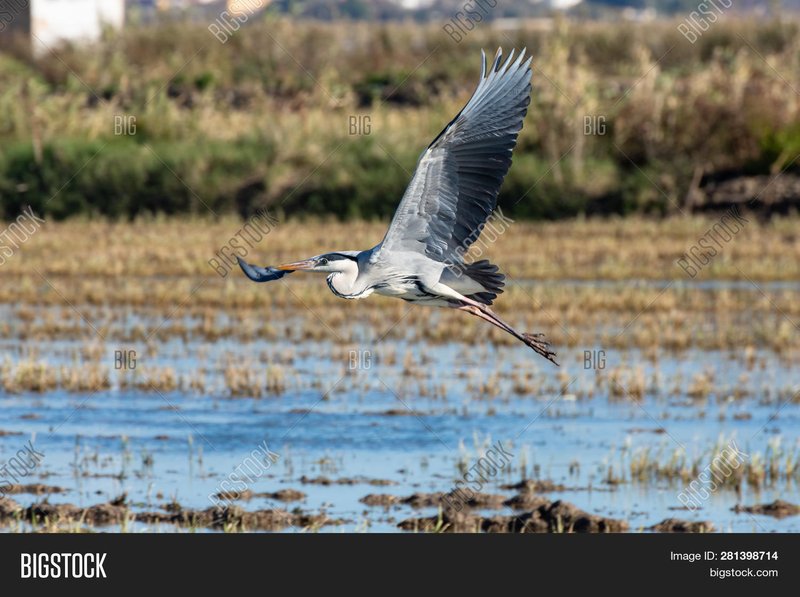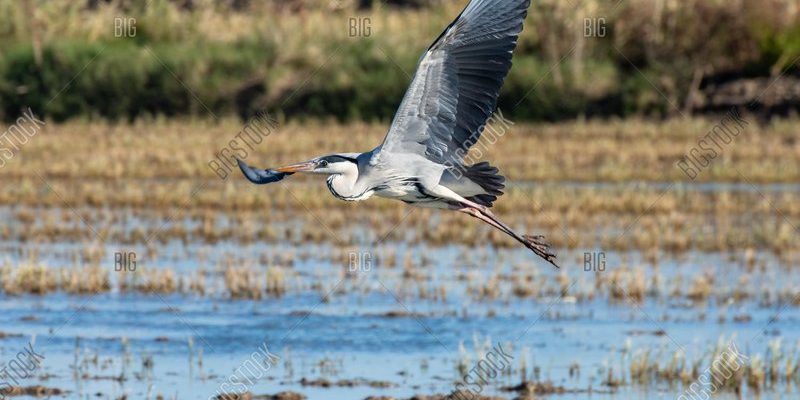
Imagine you’re out for a stroll by a riverbank and you spot a heron. It stands elegantly, poised like a statue. You might be wondering how this bird, with its long neck and thin legs, can be such an efficient hunter. The truth is, herons are equipped with specialized skills that allow them to thrive in their environments. They have perfect adaptations for both flying and catching prey, and understanding these techniques reveals the sheer brilliance of nature’s design.
The Art of Flying: Graceful and Efficient
Herons are known for their graceful flight, often gliding effortlessly above the water. Their long wings allow them to soar with minimal energy, which is essential for covering large distances in search of food. The wingspan of a heron can reach up to six feet, depending on the species, making them impressive flyers. This size not only aids in soaring but also helps them maintain stability while flying at lower altitudes.
What’s interesting is how herons utilize thermal currents to their advantage. These currents are like invisible highways in the sky that warm air rises through and allow birds to ascend without exerting much effort. By riding these thermal currents, herons can conserve energy during long migrations or just while flying from one feeding spot to another. They can spend hours in the air, scouting their surroundings for potential prey.
When landing, herons are just as careful as they are while flying. They don’t just drop down randomly. Instead, they approach their landing spot with precision, using their long legs to adjust their descent smoothly. This ability to control their landing helps them not only avoid startling other animals but also ensures they can blend into their surroundings quickly, an essential factor for hunting.
Hunting Techniques: Patience and Precision
Now that we’ve explored flying, let’s talk about how herons catch their food. Herons are true masters of patience. Unlike many birds that dart around chaotically to catch prey, herons often adopt a still, watchful stance. Picture them standing motionless, their sharp eyes scanning the water for fish, amphibians, or insects. This hunting strategy relies heavily on their incredible eyesight; they can spot movements as subtle as ripples in the water.
Once a heron has located its target, it springs into action. Their hunting technique often involves a quick, snapping motion with their long beak. This is where their precision shines. When they strike, it’s a rapid and controlled motion, ensuring they catch their meal before it has a chance to escape. Some herons also hunt using a technique called “fishing by feel,” where they plunge their beaks into the water with a sense of where the prey might be hiding.
But it’s not just fish that they go after. Herons are opportunistic feeders and can adapt their hunting strategies based on what’s available. They’ll hunt for frogs, small mammals, and even insects, showcasing their versatility. This adaptability is part of what makes herons successful in various environments, from wetlands to urban areas.
Types of Herons and Their Unique Styles
There are several species of herons, each with unique characteristics and hunting styles. The Great Blue Heron, for instance, is one of the largest. Standing at nearly four and a half feet tall, it uses its size to intimidate smaller prey and can often be seen hunting alone in shallow waters. Their long legs help them wade through marshes, making it easier to spot a meal.
On the other hand, the Little Blue Heron has a different approach. This heron is smaller and more agile. It often hunts in groups, using teamwork to flush out fish from hiding. Their social behavior allows them to take advantage of cooperative hunting, making it easier to catch food in more challenging waters.
You might also come across the Green Heron, known for its clever and somewhat sneaky hunting tactics. This species is smaller and often relies on using tools to catch fish. For example, it might drop a twig or leaf onto the water’s surface, which attracts fish out of hiding. This intelligent behavior shows that herons are not only instinctive hunters but also innovative ones.
The Role of Herons in the Ecosystem
Herons play a crucial role in maintaining the balance of their ecosystems. As predators, they help control fish and amphibian populations, ensuring that these species do not overpopulate. By keeping these populations in check, herons contribute to the overall health of their habitats.
Additionally, herons can act as indicators of environmental health. Because they are sensitive to changes in their environments, a decline in heron populations can signal issues like pollution or habitat degradation. When you see a thriving heron population, it often means that the ecosystem is functioning well, making them vital to our understanding of environmental health.
Moreover, herons contribute to the biodiversity of their habitats. They coexist with various species, creating a complex web of interactions that supports life in wetlands and shorelines. By understanding their role, we can appreciate the importance of preserving their habitats for future generations.
Common Challenges Faced by Herons
Despite their adaptability, herons face numerous challenges in today’s world. Habitat loss due to urban development and pollution has significantly affected their populations. Wetlands, which are crucial for their survival, are being drained for agricultural or urban use. This loss of habitat not only limits their hunting grounds but also decreases their ability to find suitable nesting sites.
Another significant threat comes from pollution. Herons are susceptible to chemical contaminants in the water, which can disrupt their reproductive systems and lead to health issues. The accumulation of toxins in the fish they eat can also affect their health, making it challenging for them to thrive.
Finally, herons are sometimes hunted by humans, whether through illegal poaching or through legal hunting. Conservation efforts are essential to protect these beautiful birds and their habitats. Organizations are working hard to create protected areas and promote education about the importance of herons in our ecosystems.
How to Spot a Heron
If you’re keen on birdwatching, spotting a heron can be an exciting experience! Start by visiting wetlands, lakes, or rivers, especially during the early morning or late evening when they are most active. Look out for their characteristic tall stature and long necks.
You can often spot them standing still, waiting for the perfect moment to strike at their prey. If you’re lucky, you might even witness their impressive flying techniques as they take off gracefully into the sky. Patience is key—bring some binoculars, and enjoy the scene as you watch these magnificent creatures in action.
The unique flying and hunting techniques of the heron are a testament to the wonders of nature. From their graceful flights to their patient hunting strategies, these birds have perfected their skills over time. Understanding how they operate not only deepens our appreciation for them but also highlights the importance of conserving their habitats.
As we learn more about herons, we can also inspire others to take action in protecting these incredible birds and their ecosystems. So, whether you’re an avid birdwatcher or simply a curious observer, taking the time to learn about herons can enrich your experiences in nature. After all, there’s so much we can discover when we just stop and watch the world around us!

